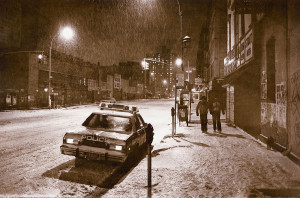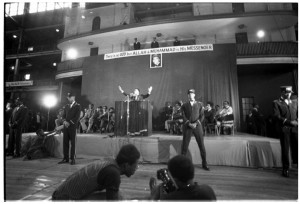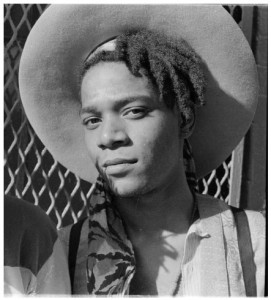
Lower Eastside, 1973.
Alex Harsley’s latest collection of his gripping photographs makes up another chapter in his four-decade pursuit to shape perception of a place.
His current exhibition entitled A Visual History of the Lower East Side / East Village will open at the June Kelly Gallery on June 20. The work will remain on view through August 1.
About Harsley:
As a walking tour often goes off the beaten path, so does Harsley with his keen eye, camera in hand, roaming on his bike, exploring aspects of the neighborhoods, their evolution and inhabitants. Harsley’s images provide insights into places that are overlooked or never come to mind for most visitors. His visual narratives afford access to one of the oldest, most historically significant and complex quarters in America, and today, some of the most visited enclaves and neighborhoods that include the East Village, the Bowery, Little Italy, and Chinatown.
Harsley’s personal exploration and inner passion for the daily human drama along with his uncanny sense of composition are both spontaneous and deliberate. He approaches the subject of place in a personal and subjective way and produces images that represent a specific history – one continually evolving out of a larger movement of change through time.
The genesis of Harsley’s work resides in his experience as he captures images of places known and familiar as well as those that rise in the endless restaging of personalities, politics, and business. This iconography from his own history allows him to create visually with conceptual understanding of how and why neighborhoods are formed, how they are connected, and how they are changing through time. He uses this imagery to transform the links of inexorable change into broader and more universal experiences.
Harsley ‘s photographs, says Kelley Nicole Girod, who wrote the essay in the exhibition invitation, “are not only aesthetically dramatic but also offer a revealing slice of New York City’s past.” She notes that the exhibition includes Harsley’s photographs of such iconic East Village figures as Jean-Michel Basquiat, David Hammons and Quentin Crisp.
Harsley processes and prints his own work. Each of his prints is unique as a result of his manipulation of the printing process in the darkroom, the layering of image, tone, and texture creating poignant as well as dream-like effects, transporting the viewer into unknown realms steeped with timely reality.
Harsley is a native of Rock Hill, South Carolina, and grew up in New York City. His images have been seen in numerous one-person and group exhibitions national and international and are represented in many private collections.
Harsley studied privately with Professor Lloyd Varden of Columbia University, a key figure in color photography. He has collaborated on projects with a number of other artists, including videos with David Hammons and Candida Alvarez, and produced a video documentary, “The Life and Work of Vincent Smith.”





